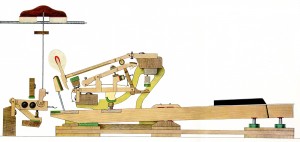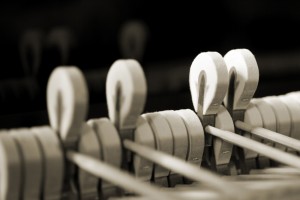Technology
From ± 1710, the mechanism has continuously developed into the modern mechanics of today. There is hardly anything to be improved. On average, each key consists of over 60 processed parts, made up of wood, felt, leather, axles, springs, and set screws, lead weights, etc. In order to function optimally it requires a very precise adjustment mechanism, because it determines the performance nature (the touch) and the degree of musical expression.
 Of course, playing the piano will gradually disrupt the mechanics. But disruption of mechanics is also caused by climatic influences, which time and again cause the wood to expand and contract. And gradually, wear will occur, especially on the felt hammer heads, which – as they strike against steel strings – will become increasingly worn.
Of course, playing the piano will gradually disrupt the mechanics. But disruption of mechanics is also caused by climatic influences, which time and again cause the wood to expand and contract. And gradually, wear will occur, especially on the felt hammer heads, which – as they strike against steel strings – will become increasingly worn.
Therefore, technical maintenance is required every 3 to 5 years for optimum operation of the mechanism.
CLIMATE INFLUENCES
Fluctuations in humidity and temperature are almost the only cause of a piano becoming out of tune. The wood of the curved soundboard naturally responds and will:
– expand at high humidity, causing increased bulging and string tension,
– shrink at low humidity, causing reduced bulging and string tension.
Naturally, there is high humidity in Summer and Autumn. Low humidity occurs in Winter and Spring.
In Winter the temperature indoors particularly plays a major role. Then the artificially heated room dries out the already dry air even more, far below the desired level. Therefore, in Winter months it is definitely recommend to do something about this. The way in which depends on local conditions.
HAMMER HEADS
The hammerheads play a crucial role in determining timbre. Wear of hammerheads causes uneven tone and thereby limits the possibilities of musical expression. The worn grooves should therefore be removed after a few years by removing a thin layer of felt from the hammers. In this way – combined with voicing – the original sound is restored.
